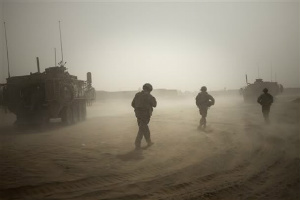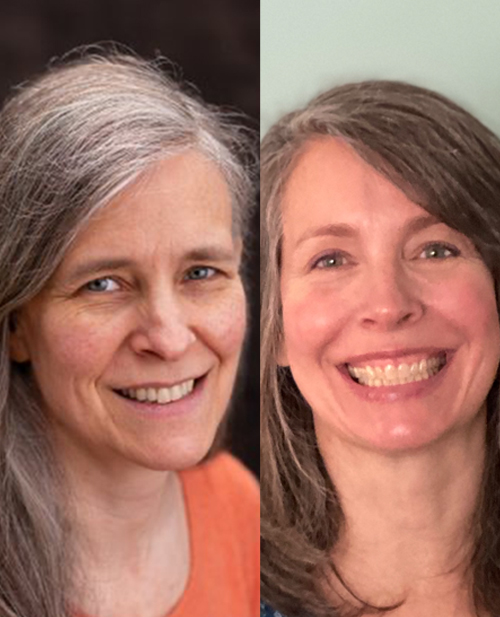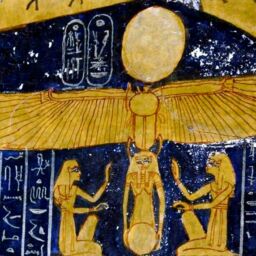
Soldier and Seeker
Using Personality Type on the Road to Wholeness, Reintegration, & Self-Awareness
Elizabeth and Katherine W. Hirsh, February 1, 2012

“An incessant stream of fantasies had been released, and I did my best not to lose my head but to find some way to understand these strange things. I stood helpless before an alien world; everything in it seemed difficult and incomprehensible… When I endured these assaults of the unconscious I had an unswerving conviction that I was obeying a higher will, and that feeling continued to uphold me until I had mastered the task.” -C. G. Jung (1961)
In this article, we attempt to draw parallels between the reintegration process and the process of individuation/type development. Civilian life differs from life in a combat zone in ways both obvious and subtle. These differences can be challenging to service personnel and seem relevant to the challenges of individuals pursuing type development/individuation as well. Specifically, we’d like to focus on four topics of concern to reintegrating soldiers and, we would argue, to seekers of personal growth as well.
Structure and Sense of Control

We do what we do effectively and without much thought or effort. In sharp contrast, exercising those aspects of the Self that are in the non-preferred realm can feel like operating without rules or signposts, and all bets are off in terms how one can be and act without being sanctioned. After a time in a chaotic and ever-changing environment—combat or the psyche—both the reintegrating warrior and the individual pursuing type development/individuation need to discover new structures and a renewed sense of control if they are to move forward to a “new normal.”
Meaning and Purpose
You have a mission when you are in combat: a large scale one such as securing an Afghan province, and many small scale ones, such as securing a checkpoint so that supplies or personnel can get to where they are needed. Moreover you are, almost by definition, part of something larger than yourself. Upon your return, things are muddier. What is your mission within the armed forces when fellow warriors are still serving overseas? What is your mission with your family members when they have been carrying out many duties for you in your absence? How do you find meaning and purpose in daily life when the stakes are no longer life and death? Similarly, individuals seeking growth and development can also feel less content with their typical sources of satisfaction and significance. They may see tasks at work or at home that before yielded a sense of pride as now somewhat hollow or lacking a connection to the important things in life. In both the reintegrating warrior and the individual on the path to type development/individuation, there can be a drive to find new ways to act on and express their most important values and a new emphasis on integrity and congruence. To put it simply, both the warrior and seeker of personal growth face tough questions with regard to meaning. For the warrior, how do you reconcile killing with making people safe? For the person undergoing a personal transition, how do you reconcile your needs with the demands of others or society when these are in opposition?
The Feeling of Being Different
When you put on a uniform you set yourself apart. You stand out and at the same time you become more anonymous: brave and valiant yet interchangeable. Becoming a warrior requires you to shed some aspects of your identity and to take on new ones to fit your new role. Allegiances can be strained as new, family-like bonds are forged with fellow warriors. Individuals on the type development/individuation journey can also experience feelings of isolation from significant others and the community at large. The effort to know the Self can require both turning inward and at times turning away from current ways of being—from certain relationships and from values or belief systems once taken for granted that no longer fit. Trying on new behaviors or new ways of thinking that to you feel so right may be met with resistance. You may find yourself being asked directly or indirectly to “change back.” Your goal of greater personal integrity through enhanced self-awareness may be seen as pompous or egotistical. What both the reintegrating warrior and the individual pursuing type development/individuation share is a desire to find continuity between who they were and are with who they are becoming. They seek ways to ground their newfound wisdom in all that is good from their past while jettisoning old patterns that could limit their growth potential.
No Time to Waste – Make Every Moment Count
“BANG! You’re dead.” To live under these conditions causes a tension between the desire to protect yourself from harm and the motivation to “risk it all” in order to help others or to feel alive. Warriors see, hear, smell, taste, and touch death repeatedly and are faced with how unexpected, unpredictable, undeserved, and inexplicable loss can be. Having personally lived the truth that existence is tenuous, warriors grow to appreciate moments of joy (and sorrow) great and small and strive to get the most out of them. Likewise, individuals working toward type development/individuation recognize that gains in self-understanding and self-acceptance may be fragile, fleeting or bittersweet—one step forward, two steps back—and do their best to celebrate gains, no matter how small, as they occur. Knowing they can’t go back, rewind, or re-do what now, in retrospect, seems like living unconsciously, pushes them to grab every chance to practice living in a more heartfelt, mindful way. The reintegrating soldier and the seeker of self-knowledge engage the world as it is while working deliberately to create the world they want.

- Realize that reintegration is a new beginning, so confusion is normal.
- Seek out others who know what you’re going through for support.
- Put your experience in perspective—examine past, present, and potential future impacts.
- Make a conscious effort to avoid extremes—don’t check out, withdraw, or become overstimulated with excessive risk taking.
- Focus on how you might take what you have learned and turn it into positive changes in your life now.
- Use this new beginning to explore possibilities you’ve never considered before.
- Do something small but important that you can accomplish immediately to maintain your momentum.
- Have a long-term plan, either general or detailed, and share it with someone you trust.
- Be patient with those who have not shared your experiences.
- Seek to make a difference by looking for formal or informal ways to use your gifts to help others.
Soldier or seeker, we all need help on our path. And hopefully we can help each other as well, by simply recognizing that each of us encounters blessings and challenges that flow from our unique take on life. Through expanding conscious awareness, personality type can offer us insight into ourselves as well as others, empower us and foster healing of the Self and relationships, with the ultimate result of increasing the possibility that our journeys will be less conflict-ridden and more fulfilling.
* List excerpted from page 57 of Introduction to Type® and Reintegration: A Framework for Managing the Transition Home.
References
Hirsh, E., Hirsh, K. W., & Peak, J. (2011). Introduction to type® and reintegration: A framework for managing the transition home. Mountain View, CA: CPP, Inc.
Jung, C. G. (1961). Memories, dreams, reflections. Ed. A. Jaffé. Trans. R. Winston & C. Winston. New York: Vintage.
Header Image
Martin Ideler, “Blue & Red Railroad Tracks,” 1920s

















